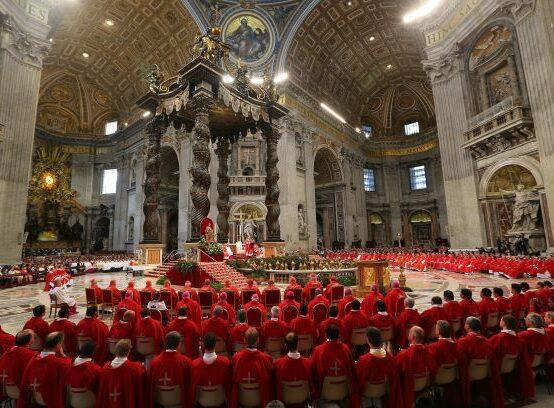A note from the new archbishop of the basilica, Cardinal Gambetti, softens previous provisions that had caused controversy.
Newsdesk (June 24, 2021 15:30, Gaudium Press) – Last March 12, following the cancellation of private masses on the altars of St. Peter’s Basilica with only the possibility of concelebrating in the Vatican Basilica, several voices were raised, expressing their perplexity and calling for the measure to be withdrawn.
The former prefect of the Congregation for Divine Worship, Cardinal Sarah, for example, appealed directly to the Pope to withdraw the Secretariat of State’s decision: “I humbly beg the Holy Father to withdraw the recent norms issued by the Secretariat of State, which lack both justice and love, because they do not correspond to the truth or the law, and do not facilitate but rather endanger the decorum of the celebration, devout participation at Mass and the freedom of God’s children.” Other cardinals have also expressed themselves along the same lines.
On 22 June 2021, in the “Note from St. Peter’s Basilica on the Order of Eucharistic Celebrations,” the new archbishop of the Basilica, Cardinal Mauro Gambetti, introduced some important nuances to the initial provision:
“Exceptions are admitted with regard to the places of celebration – on the occasion of the memory of a saint whose remains are preserved in the basilica – and the simultaneous holding of certain celebrations for groups of pilgrims or in the extraordinary form of the Roman rite.”
However, “when possible, it is more appropriate that priests concelebrate”, that is, if a priest arrives with a group of faithful, he should join in the concelebration, and with him, his faithful.
Exceptions
The Note also states that “the Magisterium teaches that the exceptions in which concelebration is recommended are those cases in which for the benefit of the faithful the contrary is neither required nor advised”, that is, concelebration may be excepted, taking into account, for example, “the understanding of language in the liturgy in order to charity” or “the pastoral value that the celebration of the Eucharist may have for a group of pilgrims, according to the existing rites of the Catholic Church,” referring to pilgrims who have a special affection for the liturgy in the ancient rite.
Finally, “the dimensions of St. Peter’s Basilica and its architecture make it possible to respond to the different needs of those who wish to celebrate the Eucharist in a group without overlapping with the concelebration that takes place in the main liturgical places,” since “St. Peter’s Basilica is characterized by the Petrine ministry of unity, mercy and orthodoxy of faith and welcomes pilgrims from all over the world.”
(With information from Zenit)

































